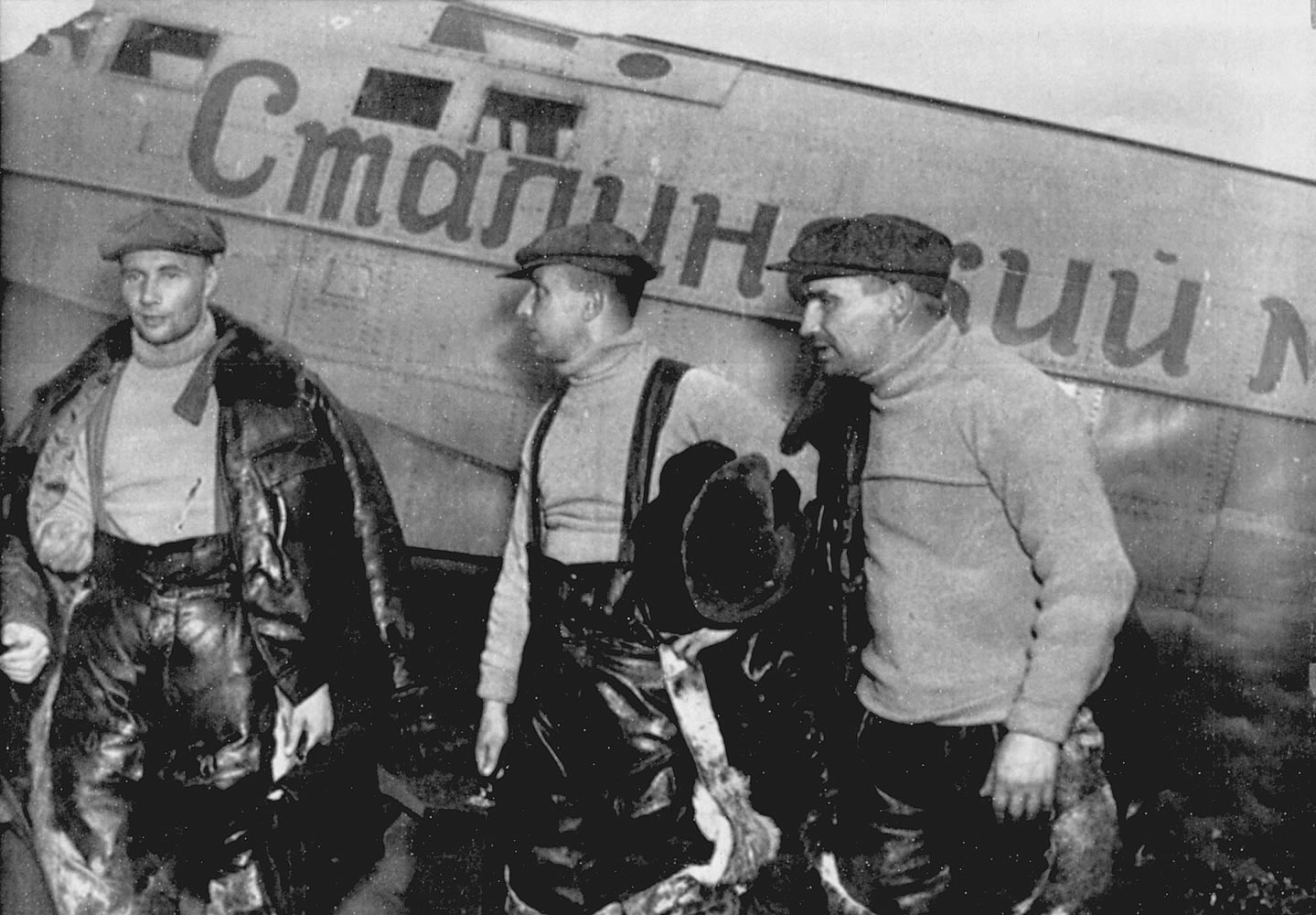What: Free public observance of 1937 Chkalov flight.
When: Today, 8 a.m.
Where: Pearson Air Museum, 1115 E. Fifth St.
When Tom Ghormley heard that a Russian plane had just landed in Vancouver, he grabbed his box camera, jumped on his bicycle and pedaled down Main Street toward Vancouver Barracks. He was hoping to capture a moment in history.
That was June 20, 1937 — 75 years ago — and word was spreading that three Russians had landed at Pearson Field.
It took a day before Bob Buker was able to see the massive single-engine ANT-25 parked on the Army Air Corps field. His dad, Walt, took off work on June 21 so he and his 7-year-old son could visit Pear
son Field.
Ghormley and Buker are some of the Vancouver residents who can still remember the day when pilot Valery Chkalov, co-pilot Georgy Baidukov and navigator Alexander Belyakov arrived in Vancouver after setting a world aviation endurance record.
A gathering of community members and civic leaders will observe the 75th anniversary of that milestone at 8 a.m. Wednesday at Pearson Air Museum. The minute Chkalov’s airplane touched American soil will be commemorated with a floral tribute at 8:22 a.m.
The one-hour event is free and open to the public. Buker and Ghormley both say they’re planning on attending.
In 1937, Ghormley’s family owned a drug store at 24th and Main streets. The 19-year-old, who had graduated from Vancouver High School a year earlier, said he learned about the Russians’ arrival on the radio.
“I thought it was a historic occasion,” the 94-year-old Ghormley said. So he pedaled from their home on 24th Street, near the drugstore, to Pearson Field. He walked around the airfield and took photographs of the Russian airplane — guarded by American soldiers — from several angles.
When word got around that Army Gen. George Marshall was taking the fliers to his home, Ghormley got back on his bike and pedaled up to Officers Row.
“I saw them go into Marshall’s house,” Ghormley said.
Another witness
The next day, Bob Buker and his dad went to Pearson Field to see what was going on.
“My dad was interested in me seeing the Russians,” the 82-year-old Buker said.
And just to illustrate the overlap in technologies, he explained the job his dad put aside so that the Bukers could marvel at the latest aviation marvel.
“He was digging basements with a team of horses,” Buker said. “He was the last teamster in Vancouver with horses.”
The Bukers found the scene at Pearson more organized than it had been the day before. The plane was roped off, but Buker estimates that he was only 15 feet from the fliers.
He also recalls that the Russians were dressed a little fancier than on June 20, when they stepped out of the plane wearing flight suits.
“I remember they were in long coats,” Buker said. “Padden’s men’s wear provided them with overcoats. It was June, but it was not a warm June.”
That was not Buker’s last brush with Russia, by the way. He’s worked for the U.S. Agency for International Development as an agricultural adviser in several segments of the former Soviet Union, and Buker always made sure Russian farmers knew where he was from.




